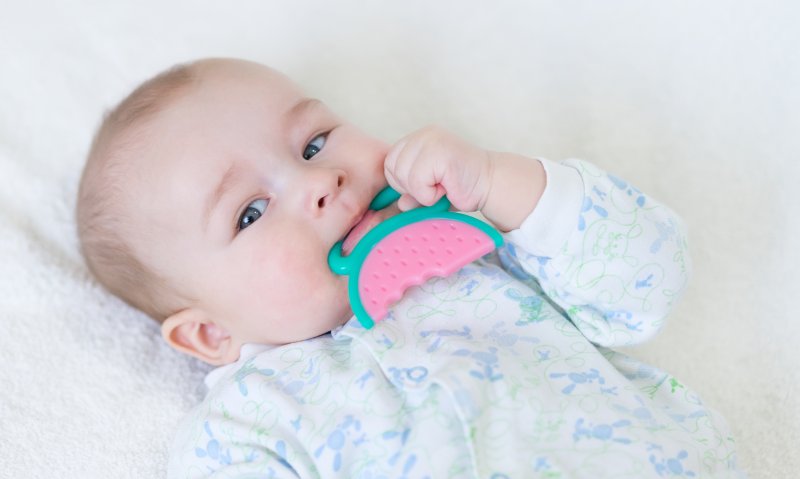3 Ways to Help a Teething Baby Sleep
July 22, 2021

Is your baby fussy? Do they constantly gnaw on their hands? Are they drooling excessively? Are both of you unable to get adequate sleep? If so, welcome to the teething stage. On average, a baby’s teeth will begin to erupt around 6 months of age. This process often continues until your child reaches the age of 3. With each new tooth pushing through the gums, it can cause pain, discomfort, and exhaustion. Fortunately, there are things you can do to help your baby find relief as well as sleep through the night. Here are 3 tips to consider that will help your little one through the teething process.
Gently Rub Their Gums
Using a clean finger or damp washcloth, give your baby the relief they need by gently applying pressure and rubbing their tender gums. This will alleviate any pain they feel as a result of their incoming primary teeth. The careful motion of your finger and the coolness of a damp cloth will help to soothe your baby to sleep. It’s important to remember, however, that you should always keep your nails cut short to prevent accidentally cutting your baby’s gums or other areas inside the mouth.
Use Cold Teething Toys
Oftentimes, some of the best devices you can use to help your baby sleep are teething toys. Although it is not recommended that you buy those that contain liquid because of the risk of leakage, you can purchase those made of BPA-free materials that are safe for your little one. Placing them in the refrigerator is also beneficial in providing a cool, numbing sensation. While it might only be temporary relief, it’s often enough to help them fall back to sleep. If you do not have a teething toy nearby, you can also place a clean, wet washcloth in the freezer for 30 minutes before giving it to your baby.
Provide Pain Medication If Needed
If other methods are ineffective, don’t be afraid to give your child the appropriate dosage of pain medication. Make sure, however, that you talk to their physician or dentist about how much they can safely receive before administering any form of medicine. Typically, if your child is at least 6 months of age, they can receive children’s Tylenol or Ibuprofen. Just make sure you never give your little one products that contain benzocaine (Baby Orajel), as it can be toxic for children under the age of 2.
Teething is a normal part of life and unfortunately, it can leave you and your baby feeling fatigued for some time. But with the right tips and tricks, your little one will find relief while you both start getting the sleep you need.
About the Author
Dr. James Forester is a board-certified pediatric dentist who completed his Doctor of Dental Surgery degree at the University of Pacific’s Arthur A. Dugoni School of Dentistry in 2002. In 2006, he completed a postdoctoral program in Advanced Education in Pediatric Dentistry at St. Joseph’s Hospital in Providence, Rhode Island. Alongside his colleague, Dr. Kristine Fu Shue, the two work together to help babies and their parents navigate the teething process. If you are looking for ways to minimize your little one’s discomfort during this time, visit our website or call (805) 592-2020 to learn how we can help.
No Comments
No comments yet.
RSS feed for comments on this post.
Sorry, the comment form is closed at this time.

